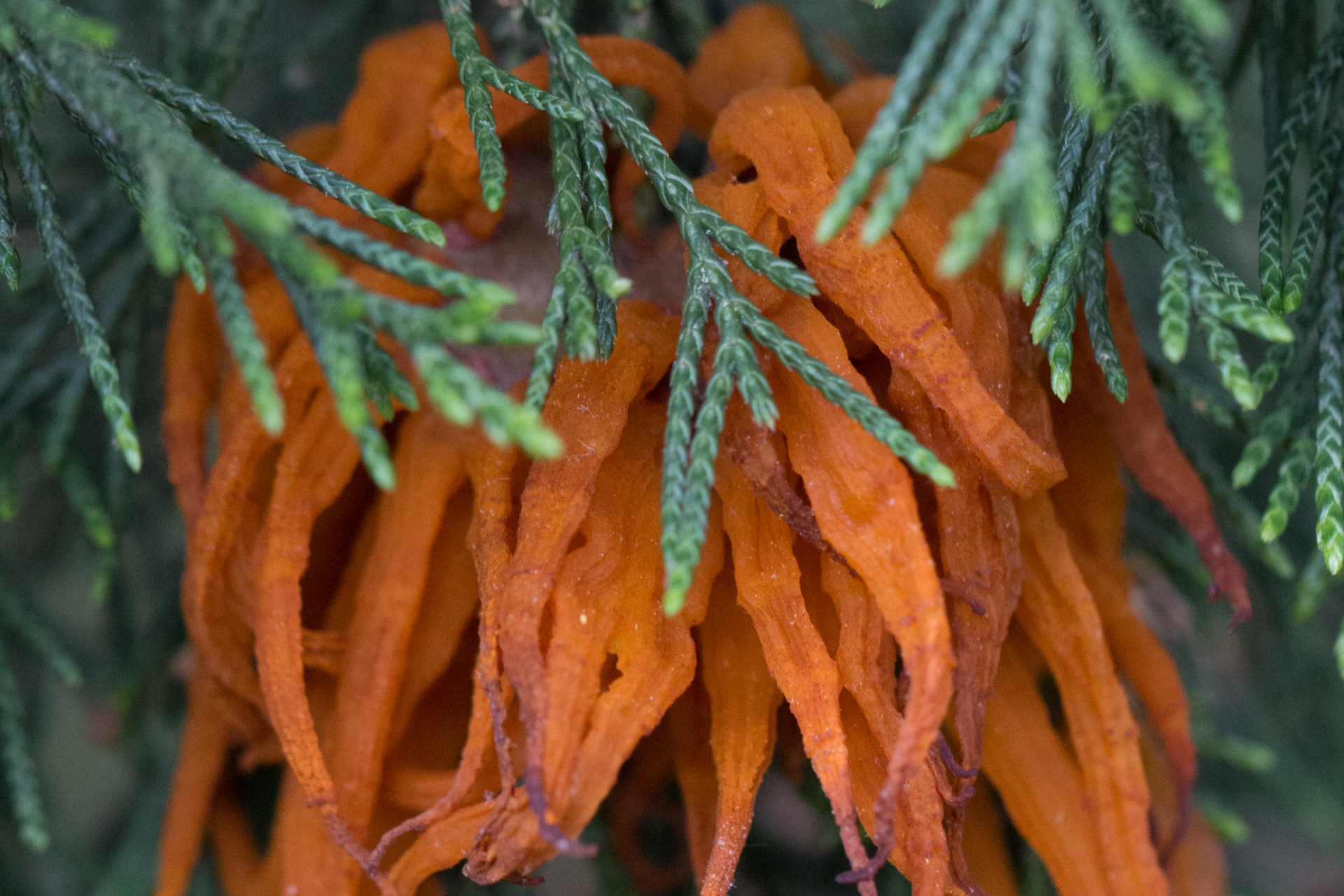What's Growing on that Red Cedar?
May 08, 2024
Perhaps the strangest things that you might see each spring are the bright orange globs hanging in the eastern red cedar trees. They look a bit like orange marmalade being pushed through a garlic press. Moist to the touch and about the size of a golf ball, these ornaments adorning the cedars are actually fungi.
What is Cedar-apple Rust Fungus?
The life cycle of the cedar-apple rust fungus (Gymnosporangium juniperi-virginianae) depends on both apple and eastern red cedar hosts. It’s possible to find cedar-apple rust anywhere east of the Rocky Mountains where eastern red cedars and apples coexist.
For most of the year cedar-apple rust is hard to see. However, when spring rains moisten the hard brown kidney-shaped galls that over winter on cedar trees they develop bright orange spore horns. These are very conspicuous and make the cedar look like it’s fruiting. The spores are then blown, sometimes several miles, onto apple trees infecting young buds and leaves. Over the course of the summer the fungus matures and eventually spores are blown back to the cedar trees to overwinter as small galls.
Can Cedar-apple Rust Fungus Cause Harm?
The fungus does not permanently harm the eastern red cedar trees. However, if left untreated, cedar-apple rust will damage apple fruits to the point of making them unsellable. This is a major concern for orchard owners. Today, fungicide is used to prevent cedar-apple rust from destroying crops, but that wasn’t always the case.
The Legal History Involving Cedar-apple Rust Fungus
In 1914, apple growers wrote the Cedar Rust Act of Virginia allowing them to destroy cedar trees on neighboring property in an effort to control the fungus. While most people enjoy eating apples, a lot of people also like eastern red cedar trees, especially if they’re on your own property. You can imagine how people reacted when they woke up to see their neighbors cutting down all their cedar trees.
This all came to a head in a classic 1928 court case where a judge determined that apple trees were more valuable than cedars, and therefore more worthy of protecting. Cedar tree owners would not be compensated for their losses, but would be allowed to keep the wood from the cut trees. Remember to thank those folks who lost all their cedars next time you bite into a delicious apple!
Finding Cedar-apple Rust Fungus
If you happen to be out on the next rainy day, try to find an eastern red cedar. These evergreens have scaly leaves and reddish-brown bark that grows in strips. Many Mass Audubon wildlife sanctuaries host cedar trees where this fungus may grow. Hopefully you’ll have a new appreciation for those bright orange galls and their complex history.
Stay Connected
Don't miss a beat on all the ways you can get outdoors, celebrate nature, and get involved.



